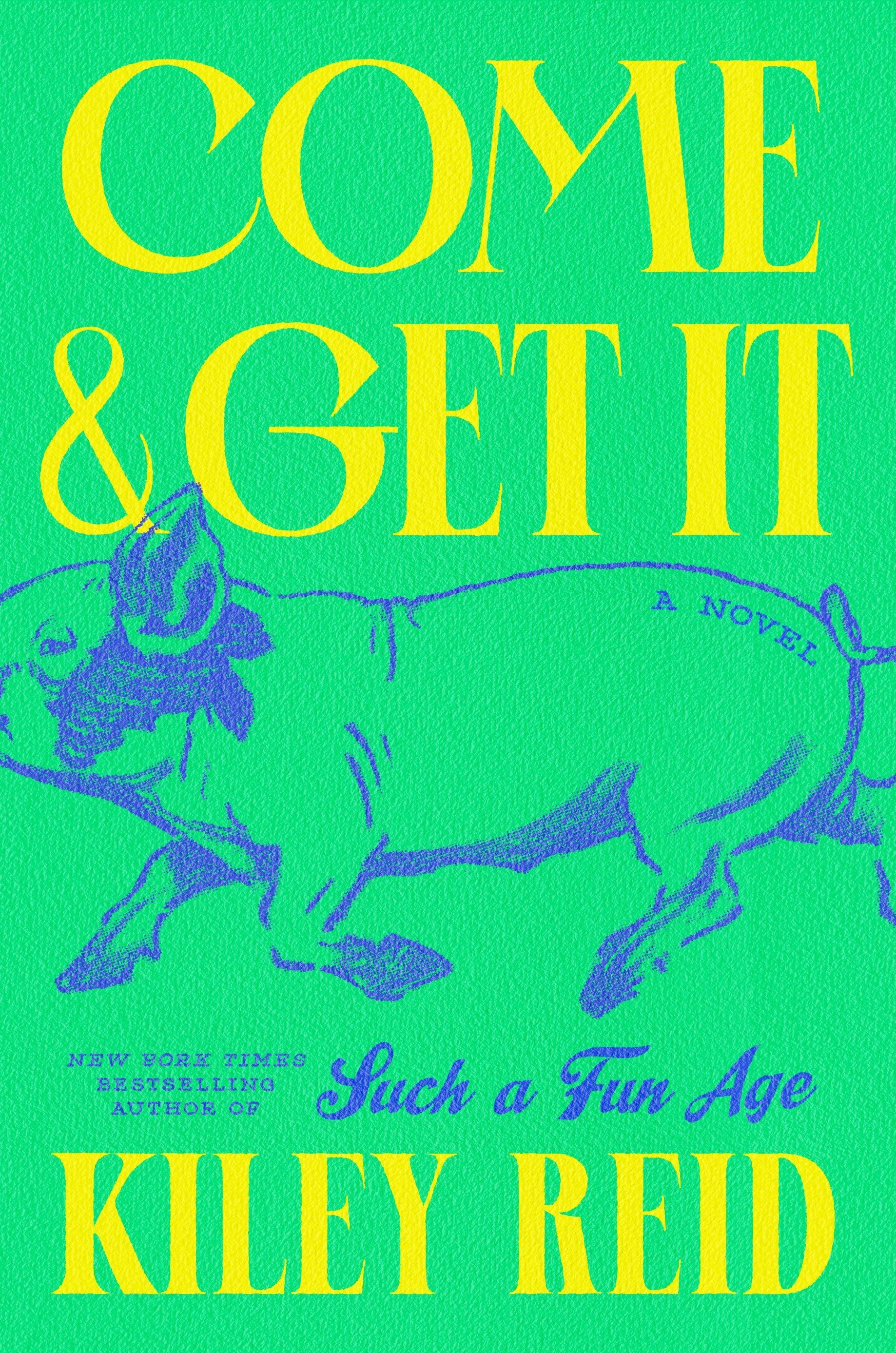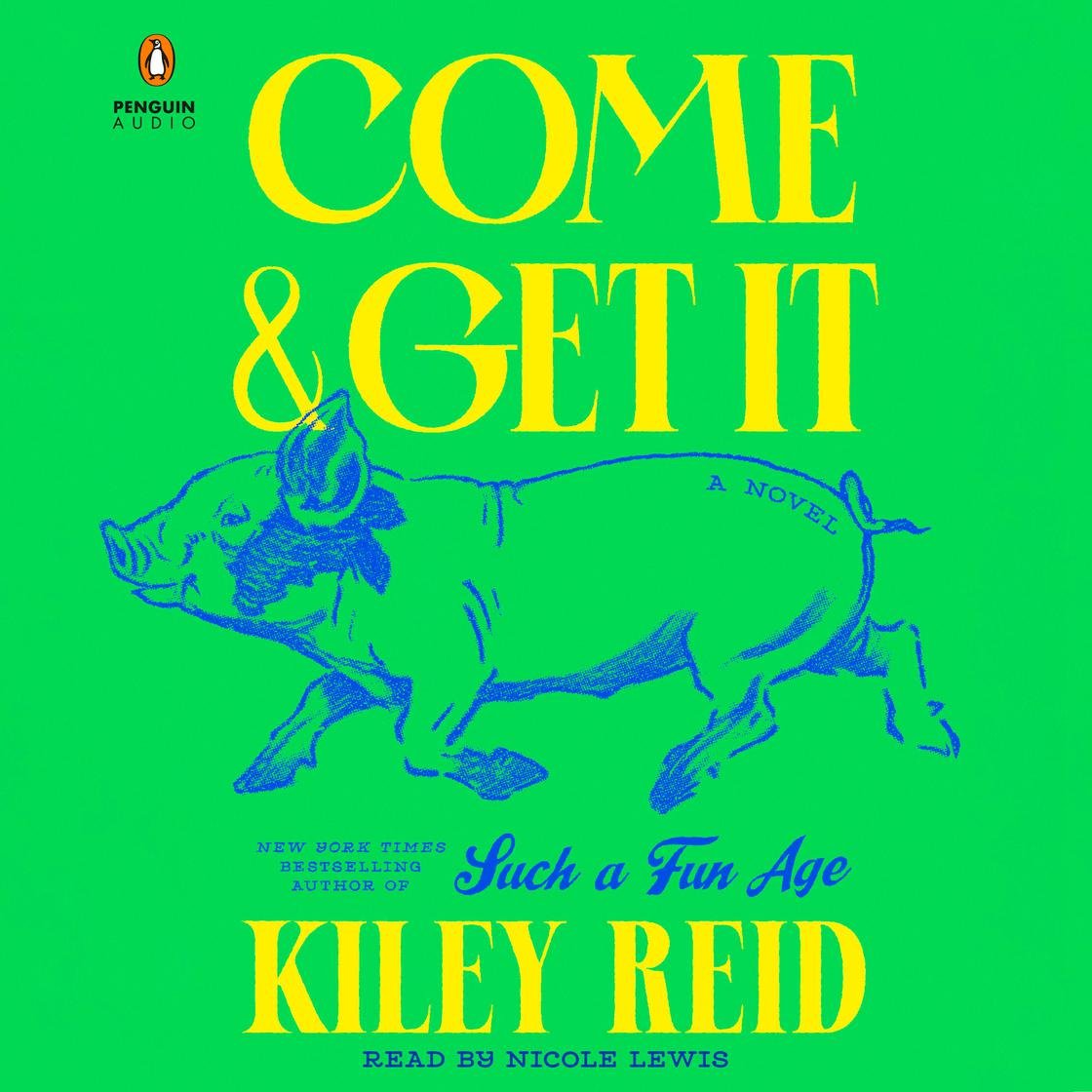Out January 30th from Kiley Reid, celebrated New York Times bestselling author of Such a Fun Age, comes a fresh and provocative University story about a residential assistant and her messy entanglement with a visiting professor and three unruly students.
Come & Get It is a "sharp, edgy social novel. . . Reid has the very same obsessions she gives her character Agatha, and the guilty pleasure of the book is the way she nails the characters' speech styles, Southern accents, and behavior and her unerring choice of products and other accoutrements to surround them with. . . . Reid is a genius of mimicry and social observation." —Kirkus Reviews
FICTION
Dorm Room Revelations as Microcosms of a Culture
In her second novel, “Come and Get It,” Kiley Reid uses chatty college students to make substantive statements about consumerism.
By Julia May Jonas
Julia May Jonas is the author of “Vladimir.”
New York Times Jan. 29, 2024
Once I realized what Kiley Reid was up to, I started jotting down brand names. Papyrus, Ziploc, Zillow, Ikea, Amy’s, Red Vines, Lubriderm — these are just a smattering of the companies and products mentioned in the first few chapters of Reid’s second novel, “Come and Get It.”
Reid’s best-selling debut, “Such a Fun Age,” focused on tensions between a Black babysitter and a white mother in Philadelphia; it was longlisted for the Booker Prize. Now she turns her attention to a college campus in Fayetteville, Ark., where the story unfurls like a magic trick, its breeziness disguising an incisive and damning exploration of economics and ethics in America.
The book follows three characters: Agatha, a 37-year-old visiting professor at the University of Arkansas, who is recovering from a breakup that occurred, in part, because of different attitudes about money. Her research brings her to Millie, a 24-year-old Black R.A., who took a year off to help her sick mother and is now a senior, devoted to her job and intent on financial stability. And then there’s Kennedy, a transfer student fleeing a disgraceful incident that happened at her former college.
Reid is a social observer of the highest order, knowing exactly when a small detail or beat of dialogue will resonate beyond the confines of the scene. We first encounter Agatha when she interviews a trio of residents in Millie’s dorm. They are a recognizable type — oblivious young people convinced of their own daring and unique hilarity. One of the girls, wrapping herself in a blanket, compares herself to a refugee to the delight of her friends. It’s a testament to Reid’s gifts that, despite moments like this, she never judges her characters. Her world, like the real one, is populated by people whose shortsightedness lives alongside good intentions.
Agatha plans to talk with the young women about weddings, but instead becomes fascinated by their relationship with money. Eventually she sells slightly doctored versions of her interviews to Teen Vogue, changing the names of the girls and presenting their opinions in a kind of money diary. Then, to obtain more material, she returns to the dorm, where she pays Millie to allow her to eavesdrop on students. Millie is eager to make a down payment on a house, so every little bit helps — and her dogged pursuit of this goal allows her judgment to sway.
Kennedy is terrified of new relationships, and her primary forms of companionship are food, self-help books and an endless procession of sappy signs: This Must Be the Place, For Like Ever, Rise and Grind, Bloom Where You Are Planted. (A character sees this last one and jokingly mouths, “Racist.”) Kennedy’s foggy-brained pursuit of sentiment over meaning, of ideas about connection more than connection itself — and Reid’s gentle interrogation of both — provide some of the book’s bleakest truths.
With her perceptive eye and ear, Reid imbues her novel with the stuff, literally and figuratively, of life. Her characters define themselves by what they have consumed, what they covet and how they react to what other people have. Does Reid criticize them for it? Absolutely not. Her characters feel unique, often lovable — and always human. Money drives them in the way it drives us all, and that’s the beauty (and the terror) of Reid’s point. With her remarkable examination of American monoculture — from fast food to pop culture to handed-down ideals — she tells a story about economics that’s neither poverty porn nor finance fantasy. Instead, it’s about the hows and whys of everyday consumerism and the insidious toll it takes on our lives.
As I read “Come and Get It,” I found myself thinking of certain writers who have, over the years, elected themselves as “capital C” Chroniclers of contemporary America. With this book, Reid demonstrates that she deserves a place in the running.




